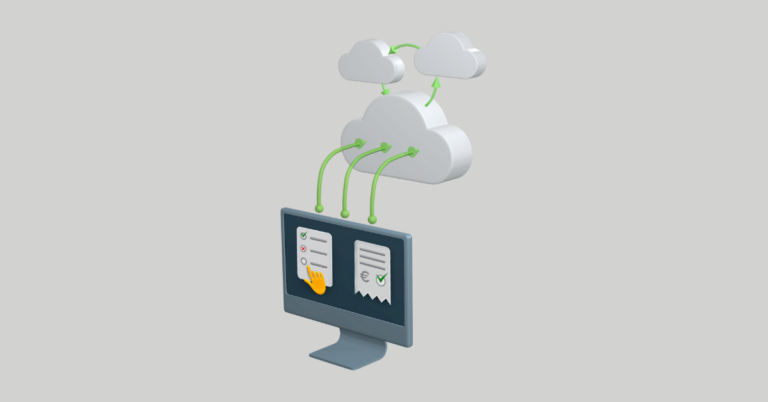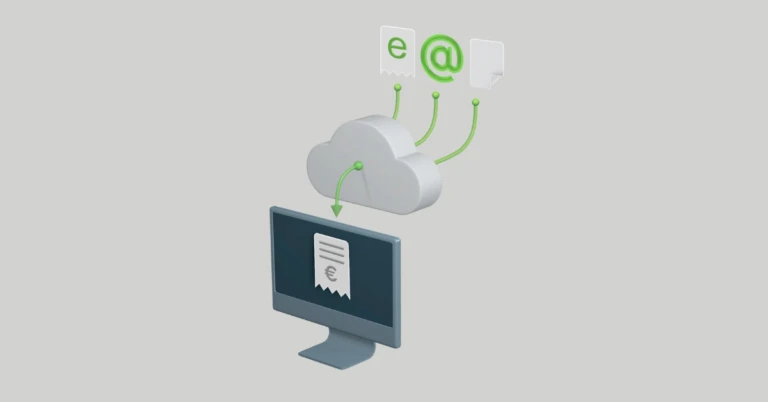
The overpower of next-gen AP automation software
AP automation software, used for automatic processing and matching of purchase invoices, has seen great development from early approval flows to rule-based lite-SaaS and today, further into the true 3rd generation SaaS. This next-generation AP automation gives the power of rule management back to your AP team and integrates incredibly smoothly with all that is needed, such as your ERP and artificial intelligence.
Early approval flow software
The first AP automation software started to merge in the late 1990s in the form of invoice approval and workflow systems. In these early systems, the idea was to bring all purchase invoices into one solution. This is actually a valuable capability even still today, but back then, the focus was still limited to centralization to create savings. It no longer took days or weeks to send paper invoices back and forth between offices, and the paper-related costs went down. Luckily, the power of automation has taken us quite a lot further from there.
Rule-based AP automation software
Continuing the development, the 2010s saw the rise of AP automation software that could make use of the data found on the invoices. These were what we now see as the traditional rule-based solutions that apply automation based on the invoice data, setting paths like “if the supplier is Company AB, then set cost center to 12345”, or “if the supplier is Company AB, then set Anita as approver and Peter as reviewer”. As a result, you would have things like postings and approvers set automatically, like in these examples. This was a great development, of course, and yet another capability that is still very much useful also today – but it had some technical shortcomings.
These 2nd generation solutions often require a lot of setup work “under the hood”, meaning the decision-makers or administrators of the companies using them seldom have the access or the capability to configure the setups themselves. Instead, the rules are built by the vendors as consultation, which not only gets pricey but also keeps the expertise related to the valuable automation in the hands of the external consultants.
In 3rd generation applications, however, the ideology has shifted. Modern AP automation software allows the users themselves to manage the rules in an easily accessible admin user interface. Consultation has gone from mandatory to a great option to help you get started or tackle trickier cases, but the power of rule management remains in-house.
The difference between lite-SaaS and true SaaS
Another issue with a lot of the 2nd generation AP automation software is that they seem like SaaS, but a closer look reveals a less handy truth. Many of these solutions are originally on-premise software with a lightweight transformation into SaaS applicable. 10 or 15 years ago, they were great as they removed the need for individual workstation installation, for example, but they don’t solve it all. They typically come with separate instances for each company, which makes them cumbersome in terms of maintenance and further development.
Quite the contrary to this, true SaaS comes with a single, consolidated environment which is easy to maintain and develop further. It sounds like a benefit for only the vendor, but it actually – and most importantly – serves the users and the customer companies. Easy development means the underlying technology is future-proof, potential errors get fixed fast, and the overall costs are much lower. You won’t end up sitting with a piece of outdated software that is customized only for your company for a very high price, trying to figure out how to meet modern-day requirements down the line of the years.
As a cherry on top, true SaaS also gives you proper authentication and authorization. There, if anywhere, dedicated and continuous development is ever as important.
The power of integration
Finally, what 3rd generation AP automation software offers on a whole other level than the earlier generations, is the capability to integrate. Nobody wants standalone software anymore where the data is siloed within the system with the only possibility of manual CSV exports. What you want is the ability to smoothly integrate into all other related systems, like your ERP so that the data simply flows from one system to another, keeping it always up-to-date with no manual effort.
A specific integration worth mentioning is an artificial intelligence solution like Snowfox. It releases you from maintaining your invoice automation rules manually. Instead, all you do is the trivial rules as the starting point, and the artificial intelligence handles the rest.
The era of next-gen
All software comes with a life cycle. For OpusCapita’s good old 2nd generation OCI, the life cycle lasted for 15 years until it was time to make way for our much more advanced, 3rd generation solution. The new Invoice Automation has been in production at both smaller and very large companies since early 2018 during which it’s proved its power and seen its early-stage fixes. It builds on all the know-how learned from the earlier generations, but very much looks into the future with a long life cycle of development, innovation, and maximized automation ahead of us.

AP automation that your team will love
Automate your invoice processing with a next-generation solution – 90% automation level even in complex cases!







